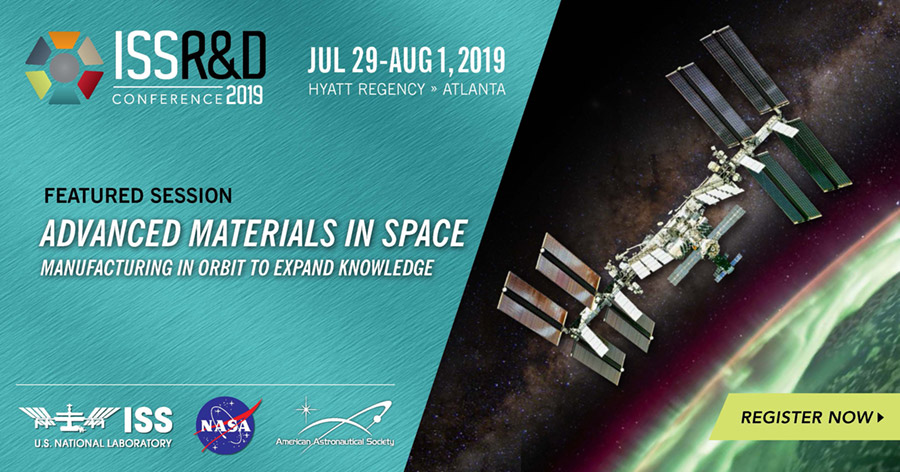KENNEDY SPACE CENTER (FL), July 27, 2019 – A panel at the 2019 International Space Station Research and Development Conference (ISSRDC), July 29–August 1 in Atlanta, Georgia, will showcase how the International Space Station (ISS) U.S. National Laboratory is serving as a business accelerator in space by supporting entrepreneurial innovation through the MassChallenge program. The panel, taking place at 9:45 a.m. EDT on Thursday, August 1, will feature investigators from some of the many startups that have leveraged the orbiting laboratory to advance their business models.
MassChallenge is the largest startup accelerator and is the first to support high-impact, early-stage entrepreneurs, providing access to world-class mentorship, in-kind support, and other benefits to help startups succeed. Since 2014, the ISS National Laboratory has partnered with The Boeing Company to award grants through an annual MassChallenge “Technology in Space Prize,” which supports startups with ideas for innovative research and development (R&D) onboard the ISS National Laboratory.
In total, the ISS National Laboratory and Boeing have together allocated more than $4.5 million in funding toward the prize, which has been awarded to more than 20 companies to conduct spaceflight projects to enhance products on Earth.
During the conference session, moderated by ISS National Laboratory Vice President of Programs and Partnerships Christine Kretz, panelists—which include several “Technology in Space Prize” awardees—will share their perspectives on the value conducting R&D in low Earth orbit, highlight their space station research successes, and discuss the impact of space-based R&D on their businesses.
Panelists include:
- Cait Brumme, Managing Director, MassChallenge
- Kevin Foley, Director, Global Sales and Marketing, Space & Launch Division, Boeing
- Brian Hess, Chief Executive Officer and Founder, LaunchPad Medical
- Paul Jaminet, Co-founder and Chief Executive Officer, Angiex
- Nicole Wagner, President and Chief Executive Officer, LambdaVision
LaunchPad Medical, a Massachusetts-based startup, is utilizing the ISS National Laboratory to explore the ability of Tetranite®, a new synthetic bone material capable of adhering bone to metal within minutes, to accelerate bone repair. An injectable bone glue such as Tetranite® could significantly improve quality of life for the 10 million Americans currently living with osteoporosis.
Biotech startup Angiex developed a novel cancer therapy targeting tumor vascularization—with the potential to treat 90 percent of cancers—but lacked a model of normal endothelium (layer of cells lining blood vessels) to test drug toxicity. The company is using the ISS National Laboratory to evaluate whether microgravity-cultured endothelial cells represent a valid model system to test the effects of vascular-targeted cancer drugs on normal blood vessels.
LambdaVision, a spinoff company from a University of Connecticut research group, is leveraging the ISS National Laboratory to improve the quality and efficiency of the manufacturing process for a protein-based retinal implant designed to restore vision to those blinded by retinal degenerative diseases.
For those unable to attend ISSRDC in person, this panel, along with all main sessions for ISSRDC, will be livestreamed. To learn more about the conference, including how to follow the livestream, please visit: www.issconference.org.
Media Contact:
Patrick O’Neill
(321) 480-1054
[email protected]
# # #
About the International Space Station (ISS) U.S. National Laboratory: In 2005, Congress designated the U.S. portion of the ISS as the nation’s newest national laboratory to optimize its use for improving quality of life on Earth, promoting collaboration among diverse users, and advancing science, technology, engineering, and mathematics (STEM) education. This unique laboratory environment is available for use by non-NASA U.S. government agencies, academic institutions, and the private sector. The ISS National Laboratory manages access to the permanent microgravity research environment, a powerful vantage point in low Earth orbit, and the extreme and varied conditions of space.
# # #







